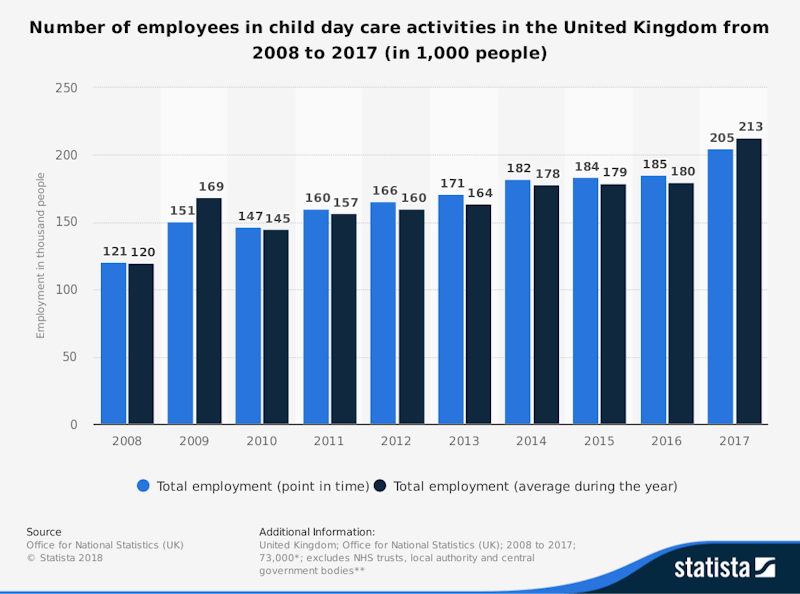Study Notes
Revenues and Costs: The UK Child Day Care Industry
- Level:
- AS, A-Level, IB
- Board:
- AQA, Edexcel, OCR, IB, Eduqas, WJEC
Last updated 16 Feb 2019
The number of people employed in the UK child day care sector has grown from 110,000 in 2008 to over 200,000 in 2016-17. Revenues for child care providers have also expanded, indeed in 2017, the total turnover of child day care activities was over £4.3 billion.
Revenues however are not the same as profits and a number of day care providers have left the industry because they are unable to maintain commercial viability. After a surge in 2015, in 2017, there were around 13,600 enterprises for child day care activities in the UK compared to 7,500 in 2008.

The day child care sector is a good example of monopolistic competition. The barriers to entry into the sector are relatively low and market concentration is low. The industry is fragmented, and no established service providers have a market share of over 5%. Busy Bees and Bright Horizons are two of the larger operators in the UK.
What are the key factors influencing revenue growth for the industry?
These factors include:
- Real disposable incomes of households with young children
- Availability and generosity of government financed subsidies (tax free) for child care
- Demographic factors such as the natural rate of population growth
- Changes in the female participation rate in the labour market
- Changes in unemployment and structural changes in the labour market such as the rise of self-employment and the gig economy
- Depth of competition between child care providers with the possible impact on average fees charged

Cost factors affecting the profitability of child care providers in the UK
These factors include:
- Hourly wage costs affected for example by changes in the national living wage
- Wage costs also influenced by availability of trained staff which in turn might be impacted by reductions in net inward migration after the UK leaves the European Union
- Other operating costs such as building rents, compliance costs and the cost of providing meals
Despite the UK government extending provision for tax-free child care for very early years, the United Kingdom has some of the highest childcare costs in the world. A report published in 2018 found that the average UK price of 25 hours of childcare a week for a child under two in a nursery was £122 (£6300 per year). There are big regional variations, child care costs per hour are 70% higher in Inner London than in Yorkshire and Humber.
The UK government offers tax-free 15 hours of free childcare available over 38 weeks of the year to all parents of 3 and 4 year olds. More details here.
You might also like

Profit Satisficing and Profitability Factors
30th January 2014

FT Video: Takeovers Explained
10th February 2016

Shut Down Points: The Rise and Fall of Blackberry
30th September 2016

Higher or Lower? Revenue streams of European football clubs
7th February 2019

Energy Price Crisis - Many Small Businesses May Not Survive
14th August 2022

Business Growth - Asda buys EG Group
30th May 2023
